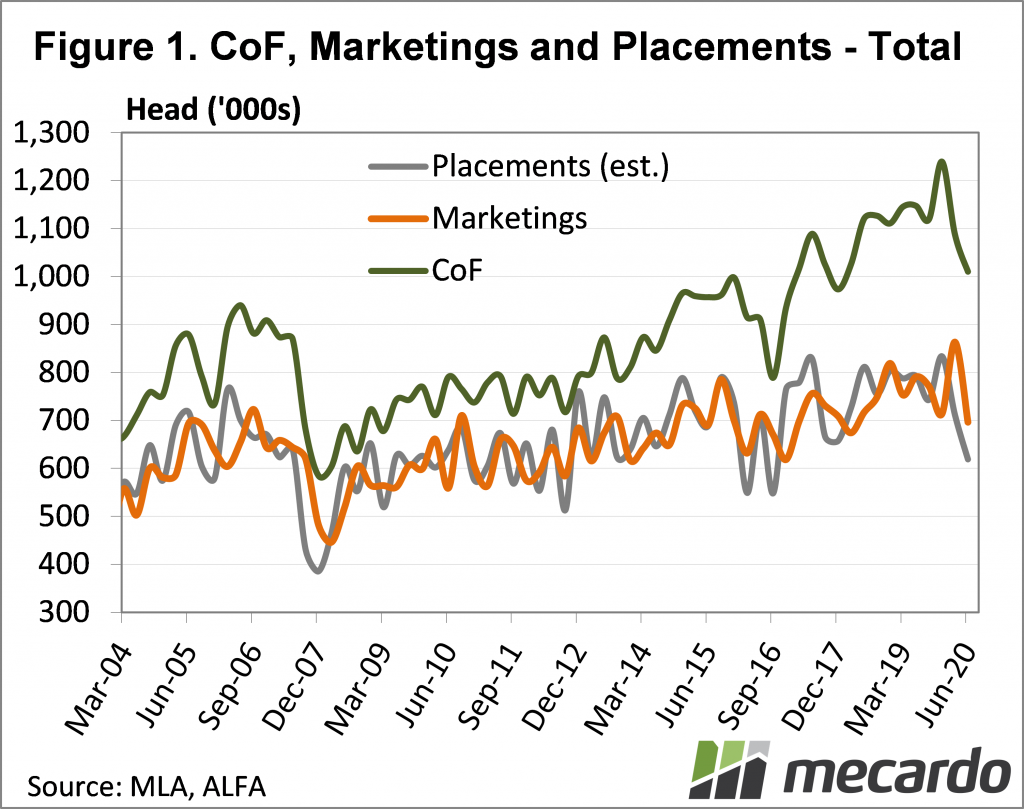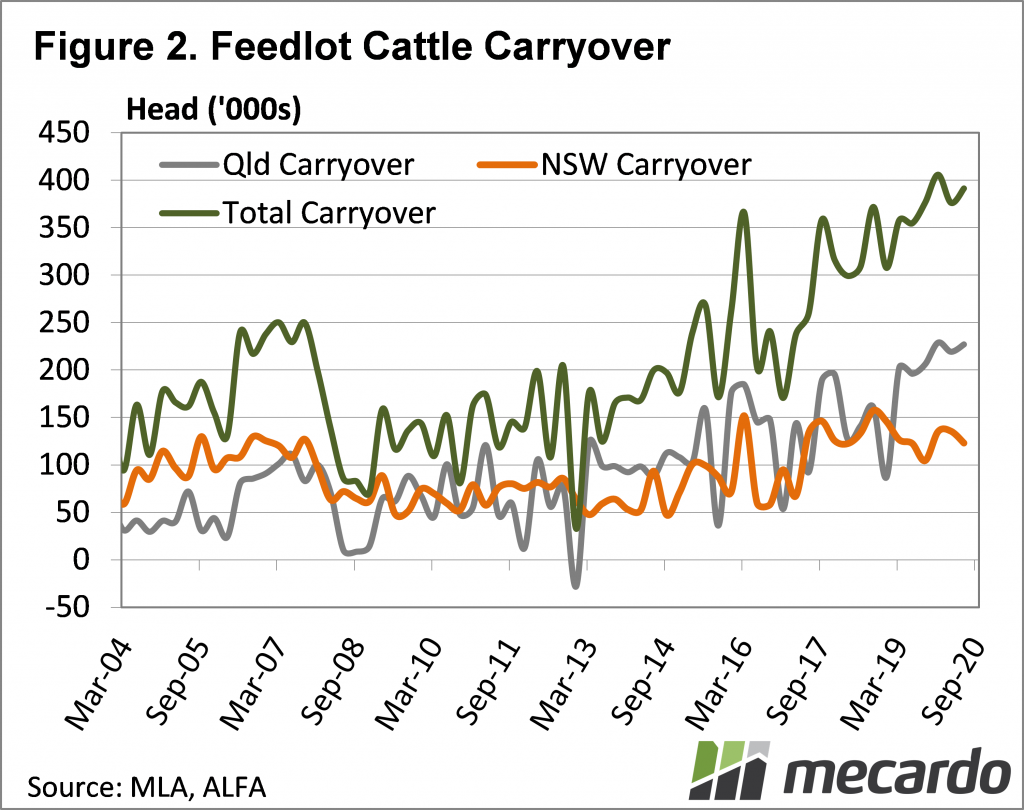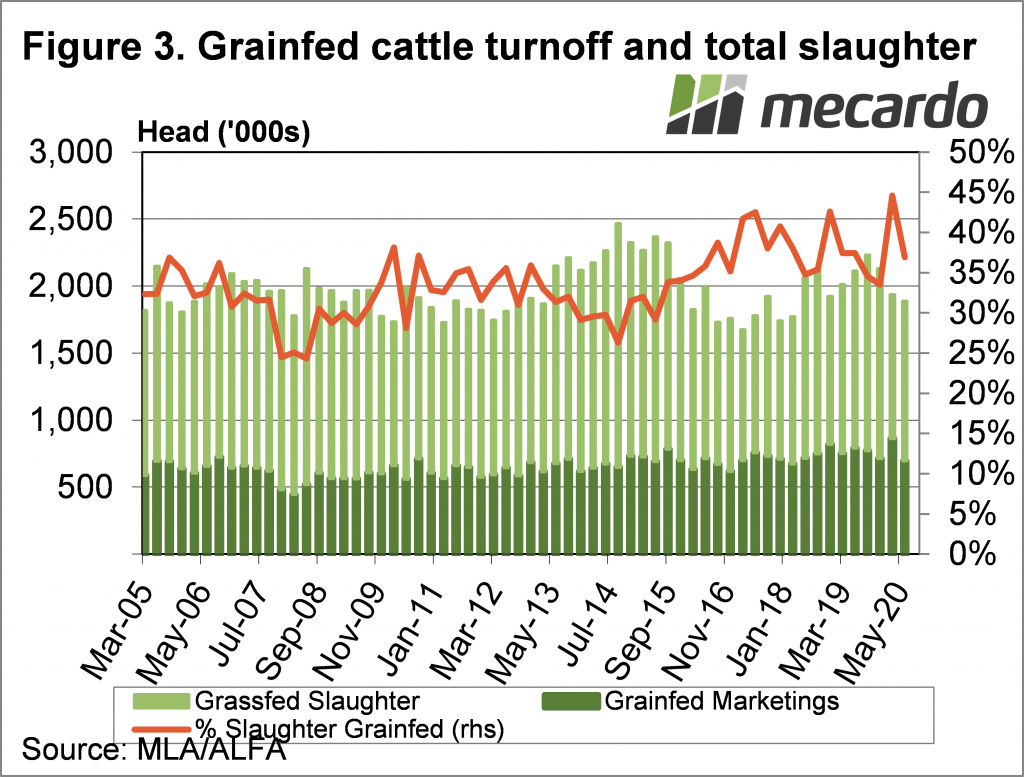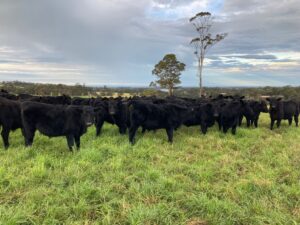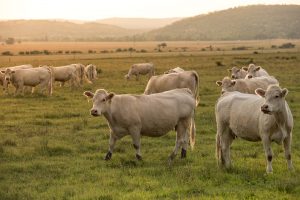The end of June cattle on feed survey results were released by the Australian Lotfeeders Association (ALFA) and Meat & Livestock Australia (MLA) last week. Not surprisingly, the numbers of cattle on feed continued to wane, as replacement feeders became harder to find.
The ALFA/MLA survey showed a continued slide in the number of cattle on feed in Australia. The headline cattle on feed number came in at 1.01 million head, down 7% on March and 12% on the June quarter last year. The number of cattle on feed at the end of June wasn’t the lowest we’ve seen. Numbers slipped under 1 million head back in December 2017 (figure 1).
Unusually, it wasn’t the biggest feedlot state, Queensland, which drove cattle on feed lower. The dry autumn in Queensland saw it post a slight increase in cattle on feed numbers, gaining 0.8%, but still 6% behind June 2019.
NSW, Victoria and WA all posted large falls in cattle on feed. In WA cattle on feed were down 38%, more than the average 20% decline we see with seasonality. In Victoria and NSW, cattle on feed would normally rise in the second quarter, but this year we saw 18% and 13% falls respectively.
Turn-off from feedlots fell more than we might expect, given the numbers which were on feed at the end of March. Figure 1 shows cattle on feed marketings were down 19% on last quarter, and 12% on the June quarter last year.
The improving seasonal conditions, along with a waning cattle herd no doubt saw cattle on feed falling when they usually rise. Placements of cattle on feed on a national level fell 13% on last quarter, and 21% on last year to take them to a nearly four year low of 619,000 head.
Placements in Queensland were steady on last month, but Victoria, SA and NSW were down heavily on last quarter and last year. Victoria took the honours with a 43% decline in placements on March, and 46% on June 2019.
The ‘carryover’ number of cattle on feed remains high, despite the lower total number. The ‘carryover’ is the number of cattle on feed in the March quarter, minus marketings in June. It tells us the inventory of cattle which has been in the feedlot for more than three months. Figure 2 shows that carryover is still close to record highs.
What does it mean?
Over the medium and longer-term, lower cattle on feed will show up in tighter supply of slaughter cattle, and slaughter in general. The high carryover number suggests that there were plenty of heavy cattle on feed at the end of June, which will be making their way to market now.
For finished and feeder cattle prices the cattle on feed numbers are supportive. Figure 3 shows grainfed cattle have become more important in supplying slaughter levels in the last five years, which should see strong competition for feeders. Meanwhile, falling supply of grainfed cattle means processors will need more grassfed cattle to fill kills.
Have any questions or comments?
Key Points
- Cattle on feed numbers continued to fall in June but were steady in Queensland.
- Tighter supply saw lower placements, while turnoff also fell heavily.
- Lower cattle on feed numbers are supportive of both feed and slaughter cattle.
Click on figure to expand
Click on figure to expand
Click on figure to expand
Data sources: MLA, Mecardo, ALFA




